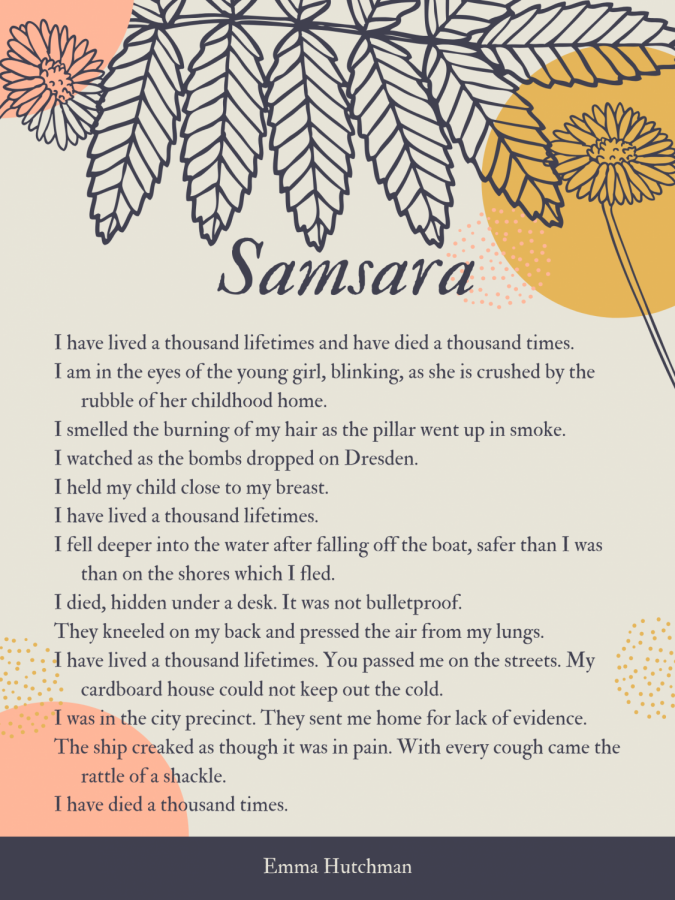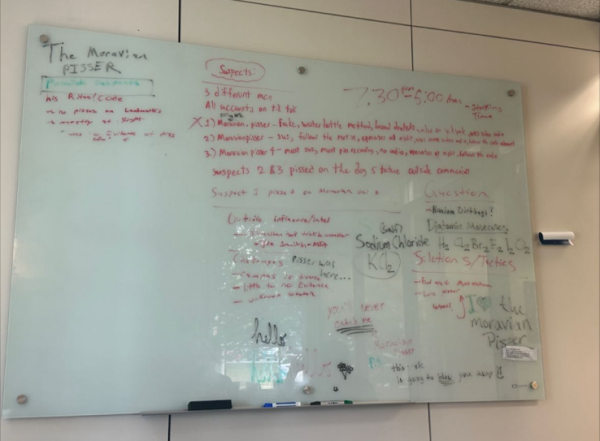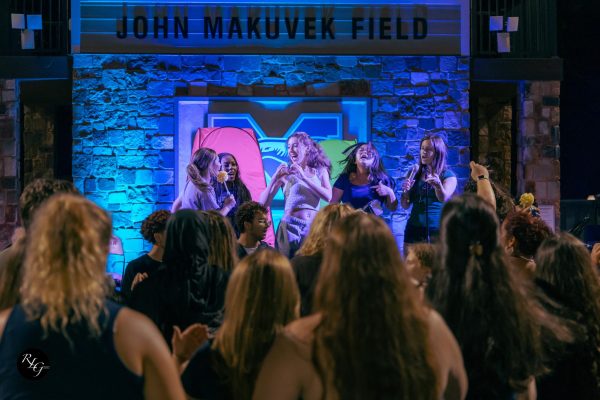Moravian College Students Visit Prison for Writing as Activism Class
It’s not every day that you hear a college student say they spent the evening in prison. But for the students in Dr. Joyce Hinnefeld’s Writing as Activism course, that has been the norm.
Hinnefeld, a professor of English at Moravian, is helping a group of students learn how to use writing as a tool for changing the world around them. To do so, she is teaching a course this semester titled “Writing as Activism” (ENGL 263) on Wednesday nights.
The class has focused on themes of mass incarceration and immigration.
“I chose these two topics because they were very timely and had so much information to be examined,” Hinnefeld explained. “I wanted to focus on mass incarceration because I see it as a truly alarming phenomenon that many people know little about. I also chose immigration as a theme of the course since it relates to incarceration more than you would first think. I had a friend who was affected by the immigration crisis, and I remember seeing the process first-hand and thinking, ‘Wow, this really is not a fair system.’ Since then, I have been more interested in learning about it, leading me to find local connections like the Berks County immigrant detention center. It’s closer to home than we think.”
The class has run in multiple iterations before, but this time Hinnefeld brought her students into Northampton County Correctional Institute in Easton. The reason: to bridge the gap between people inside and outside of prison.
To organize the story exchanges between the “Inside Students” (incarcerated individuals) and the “Outside Students” (Moravian College undergrads), Hinnefeld decided to model the student story exchanges on a format created by the New York City-based organization Narrative 4. The program has begun a global campaign to “develop empathy in the future’s leaders.” To do so, Narrative 4 developed a simple method that the class learned and then later used in their story exchanges while visiting Inside Students in Easton.
First, the Moravian students gathered at Northampton County Correctional Institute, went through security checks, and then met the incarcerated women who volunteered to participate. Hinnefeld allowed the students to pair up with an Inside Student. Then the students sat down with their partners, both of them sharing their personal stories in response to prompts such as “tell the story about a time when you learned about sympathy” or “tell about the best day of your life.”
Inside and Outside Students were allowed to take notes and ask questions while they listened, but both were encouraged to simply listen closely and understand.
In the second part of the story exchange process, all partners reconvened as a group and, one by one, retold the stories they’d shared. There was one catch — each student had to tell their partner’s story in first-person. For example, if Elizabeth and Victoria were telling stories, Elizabeth would tell Victoria’s story using “I,” starting with “My name is Victoria and this is my story.”
The goal of this unique storytelling method is to teach people how to step into someone else’s shoes and thereby cultivate empathy for others. While this simple strategy may sound silly, many students confirmed that it made them feel much more understanding of their partner.
Getting the students into the prison was no easy feat.
“There was a lot of planning that had to go into getting our students to the correctional institute,” Hinnefeld said. “There was a lot of training and logistics we had to figure out beforehand, including on-site volunteer orientations and the cooperation of other long-term volunteers.”
Thankfully, there was no backlash from students, staff, parents, or administration.
“Getting permission was surprisingly smooth,” Hinnefeld explained. “I prepared to have to fight to get my students permission to visit the correctional institute, but ultimately I didn’t need to. The administration was very supportive of the idea once I explained the logistics. I also emailed all of the enrolled students before the previous semester had even finished, informing them of these new plans for the course, with the idea that if they were uncomfortable, they would have time to drop it. On the contrary, students actually wrote back telling me how much more excited they were for the course once they learned they were going to get this kind of hands-on experience. That I did not expect, but it really pleased me.”
Back on campus, the Moravian students considered a variety of readings, movies, documentaries, and essays, including such acclaimed works as “13th,” “Inside/Outside,” “Couldn’t Keep it to Myself,” “Exit West,” “The Venus Effect,” and “Las Madres de Berks” to supplement their hands-on experience in the prison. The works addressed a range of topics, including the high ratio of African Americans in prison, life and mistreatment in prison, and the family detention center for immigrant families in Berks County. The works were used as examples of how art and activism can work in tandem to bring about social change.
But this was not the end of the course.
The goal of the course was for students to learn how to use writing as a tool to make change; the story exchanges and readings were merely food for thought on how to do that. Through their shared story-telling exchanges with the inmates, Hinnefeld’s students had something they were emotionally and passionately connected to. Now, they could express their thoughts and feelings in writing.
The students completed a number of writing assignments about their experiences at the prison. One of the most interesting results were pieces of activist poetry, samples of which can be seen in the above gallery. Students were able to be as creative and unique as they pleased; many of them produced very moving pieces of activism. Students focused on a number of themes, such as the dehumanization of incarcerated individuals and stereotypes that people in jail face once outside.
In many ways, this class was quite unorthodox. But it was definitely welcome, allowing students to learn about issues that are both disheartening and difficult, but also allowing them to learn to translate those difficult emotions into art that allowed for other people to feel those emotions with them.













Sara • Dec 6, 2019 at 6:59 pm
This is fantastic! Wish I could go back and take this class!